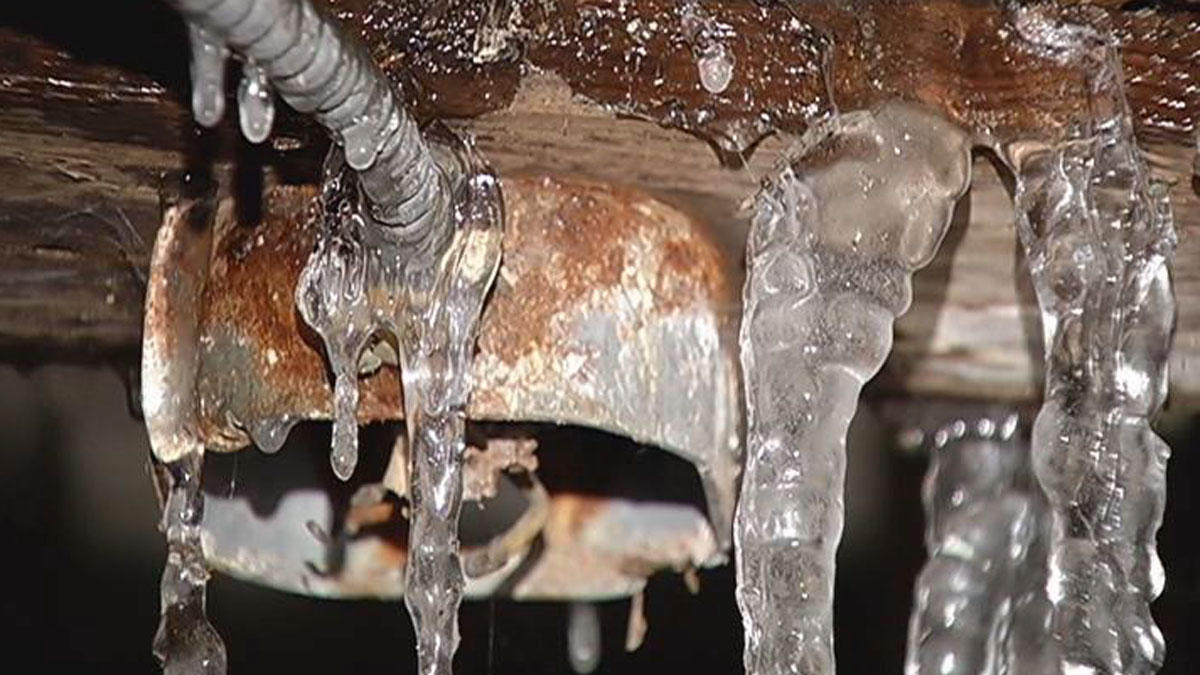Avoiding Frozen Plumbing in Cold Weather: Expert Tips
Avoiding Frozen Plumbing in Cold Weather: Expert Tips
Blog Article
What're your thoughts about Preventing and dealing with frozen pipes?

Cold weather can wreak havoc on your plumbing, particularly by freezing pipes. Here's exactly how to avoid it from happening and what to do if it does.
Introduction
As temperature levels decline, the danger of icy pipelines boosts, possibly bring about costly fixings and water damages. Understanding how to prevent frozen pipelines is critical for home owners in chilly environments.
Understanding Frozen Pipes
What causes pipes to freeze?
Pipelines freeze when exposed to temperatures below 32 ° F (0 ° C) for expanded periods. As water inside the pipelines freezes, it expands, taxing the pipeline wall surfaces and possibly causing them to break.
Threats and problems
Icy pipes can result in supply of water disruptions, residential property damages, and expensive repair services. Ruptured pipes can flooding homes and trigger comprehensive structural damages.
Signs of Frozen Piping
Recognizing icy pipes early can prevent them from bursting.
Exactly how to recognize frozen pipes
Seek decreased water flow from taps, uncommon smells or noises from pipes, and visible frost on subjected pipes.
Avoidance Tips
Insulating at risk pipes
Wrap pipes in insulation sleeves or use warmth tape to shield them from freezing temperatures. Focus on pipes in unheated or outside areas of the home.
Home heating techniques
Maintain indoor spaces adequately heated, particularly areas with plumbing. Open closet doors to permit cozy air to flow around pipes under sinks.
Safeguarding Outside Plumbing
Garden pipes and outside faucets
Detach and drain pipes garden pipes prior to winter season. Set up frost-proof faucets or cover exterior faucets with insulated caps.
What to Do If Your Pipes Freeze
Immediate actions to take
If you presume icy pipes, maintain taps available to relieve stress as the ice thaws. Make use of a hairdryer or towels taken in warm water to thaw pipes slowly.
Long-Term Solutions
Structural modifications
Think about rerouting pipes away from outside walls or unheated locations. Add additional insulation to attic rooms, cellars, and crawl spaces.
Upgrading insulation
Invest in top notch insulation for pipes, attics, and wall surfaces. Correct insulation assists maintain constant temperature levels and reduces the threat of icy pipelines.
Verdict
Avoiding frozen pipelines calls for aggressive measures and quick actions. By understanding the reasons, indications, and preventive measures, home owners can shield their plumbing throughout cold weather.
5 Ways to Prevent Frozen Pipes
Drain Outdoor Faucets and Disconnect Hoses
First, close the shut-off valve that controls the flow of water in the pipe to your outdoor faucet. Then, head outside to disconnect and drain your hose and open the outdoor faucet to allow the water to completely drain out of the line. Turn off the faucet when done. Finally, head back to the shut-off valve and drain the remaining water inside the pipe into a bucket or container. Additionally, if you have a home irrigation system, you should consider hiring an expert to clear the system of water each year.
Insulate Pipes
One of the best and most cost-effective methods for preventing frozen water pipes is to wrap your pipes with insulation. This is especially important for areas in your home that aren’t exposed to heat, such as an attic. We suggest using foam sleeves, which can typically be found at your local hardware store.
Keep Heat Running at 65
Your pipes are located inside your walls, and the temperature there is much colder than the rest of the house. To prevent your pipes from freezing, The Insurance Information Institute suggests that you keep your home heated to at least 65 degrees, even when traveling. You may want to invest in smart devices that can keep an eye on the temperature in your home while you’re away.
Leave Water Dripping
Moving water — even a small trickle — can prevent ice from forming inside your pipes. When freezing temps are imminent, start a drip of water from all faucets that serve exposed pipes. Leaving a few faucets running will also help relieve pressure inside the pipes and help prevent a rupture if the water inside freezes.
Open Cupboard Doors
Warm your kitchen and bathroom pipes by opening cupboards and vanities. You should also leave your interior doors ajar to help warm air circulate evenly throughout your home.

We were made aware of that write-up about How To Avoid Freezing Pipes from an acquaintance on our other web property. Make sure you take the time to share this blog posting if you liked it. We take joy in reading our article about Helpful Tips to Prevent Frozen Pipes this Winter.
Check It Out Report this page